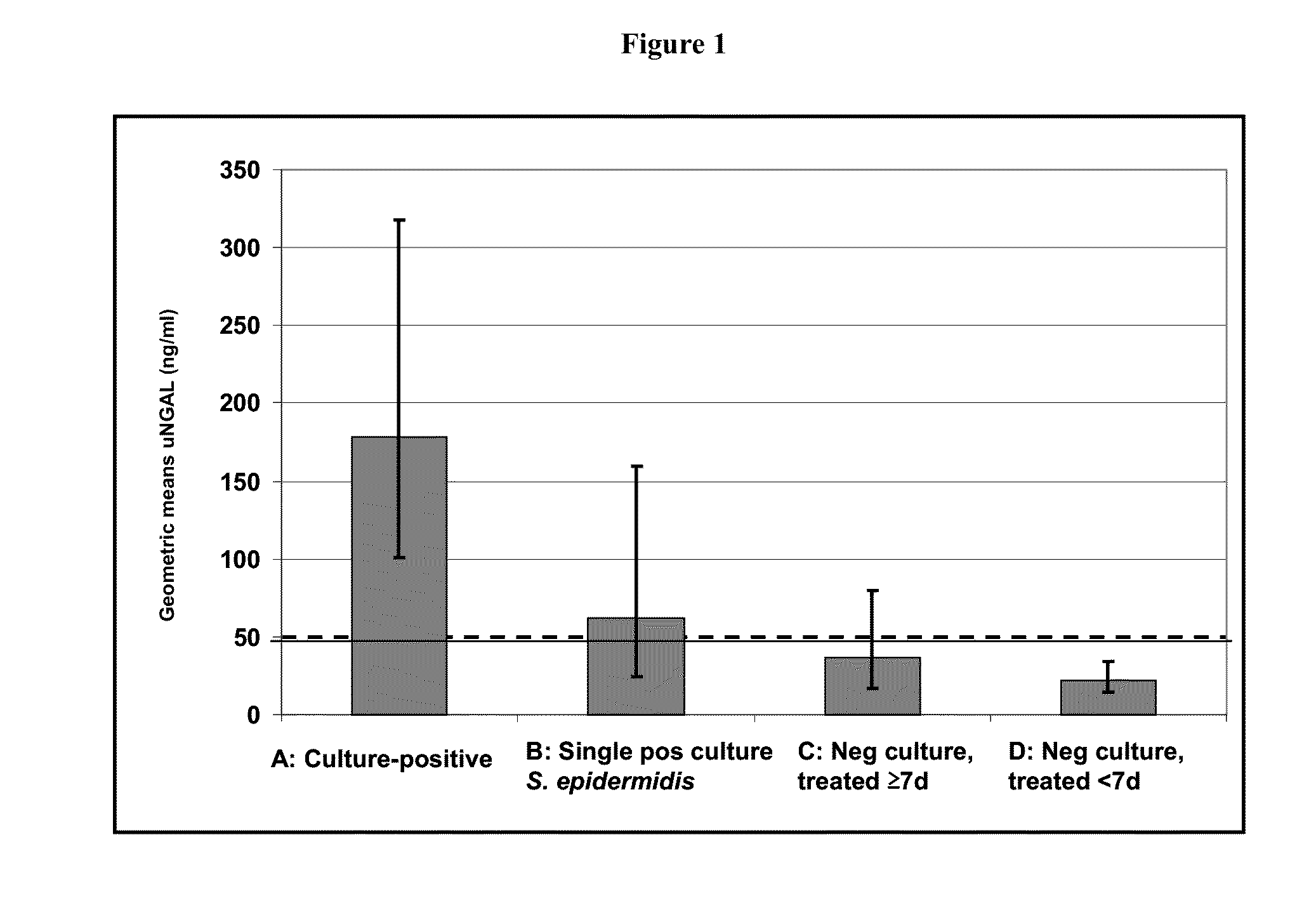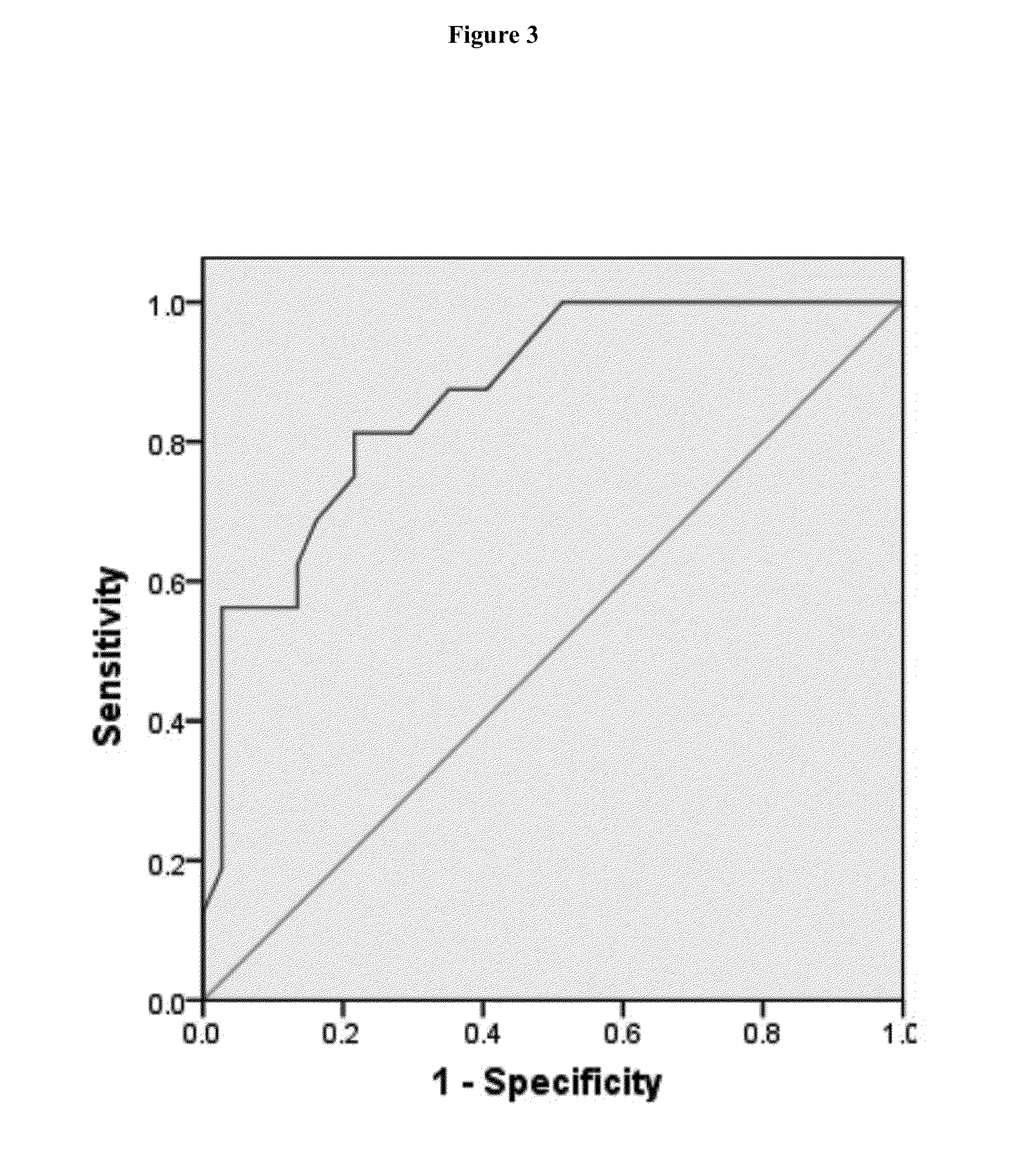Use of urinary ngal to diagnose sepsis in very low birth weight infants
a technology of urinary ngal and sepsis, which is applied in the field of use of urinary ngal to diagnose sepsis in very low birth weight infants, can solve the problems of low birth weight (vlbw) infants at substantial risk of sepsis, and the diagnosis of sepsis in premature infants is notoriously difficul
- Summary
- Abstract
- Description
- Claims
- Application Information
AI Technical Summary
Benefits of technology
Problems solved by technology
Method used
Image
Examples
example 1
[0060]Very low birth weight (VLBW) infants are at substantial risk of late onset (occurring after day of life four) sepsis. The incidence of sepsis has recently been reported to be as high as 42% with a mortality rate of 18% in some NICU subpopulations. The diagnosis of sepsis in premature infants is notoriously difficult because of its nonspecific signs and symptoms in this population, the difficulties obtaining adequate samples for blood culture, and frequent co-morbid conditions that can mask, mimic, or accompany sepsis. As a result, empiric antibiotic therapy for late onset sepsis is frequently prescribed with the potential for concomitant toxicity and the emergence of resistance.
[0061]Several early biomarkers for sepsis in the neonatal population have been proposed. Quantitative C-reactive protein (CRP) measurement is widely used in sepsis screening in newborn infants. CRP sensitivity is low at the time of first clinical suspicion but improves with two repeated measurements at ...
example 2
[0085]A prospective observational study was conducted to evaluate the role of urinary NGAL as a potential biomarker for late onset sepsis among infants hospitalized in the neonatal intensive care unit. Daily urine collections were obtained from preterm and full term neonates of all gestational ages and birth weights undergoing a sepsis evaluation at greater than or equal to 72 hours of age. The reference range for uNGAL in neonates was 5-120 ng / ml with a 95th percentile value of 50 ng / ml. Late onset sepsis evaluation consisted of performing / obtaining a complete blood count (CBC), one or more blood culture(s), two CRP levels, urine cultures, and cerebral-spinal fluid (CSF) culture(s)—if indicated. Pathogens detected included gram positive bacteria (51% -including Methicillin-sensitive Staphylococcus aureus / MSSA (8), Staphylococcus epidermidis (8), Group B streptococcal septicemia / GBS (1), Methicillin-resistant Staphylococcus aureus / MRSA (1), and actinomyces (1), gram negative bacteri...
PUM
 Login to View More
Login to View More Abstract
Description
Claims
Application Information
 Login to View More
Login to View More - R&D
- Intellectual Property
- Life Sciences
- Materials
- Tech Scout
- Unparalleled Data Quality
- Higher Quality Content
- 60% Fewer Hallucinations
Browse by: Latest US Patents, China's latest patents, Technical Efficacy Thesaurus, Application Domain, Technology Topic, Popular Technical Reports.
© 2025 PatSnap. All rights reserved.Legal|Privacy policy|Modern Slavery Act Transparency Statement|Sitemap|About US| Contact US: help@patsnap.com



